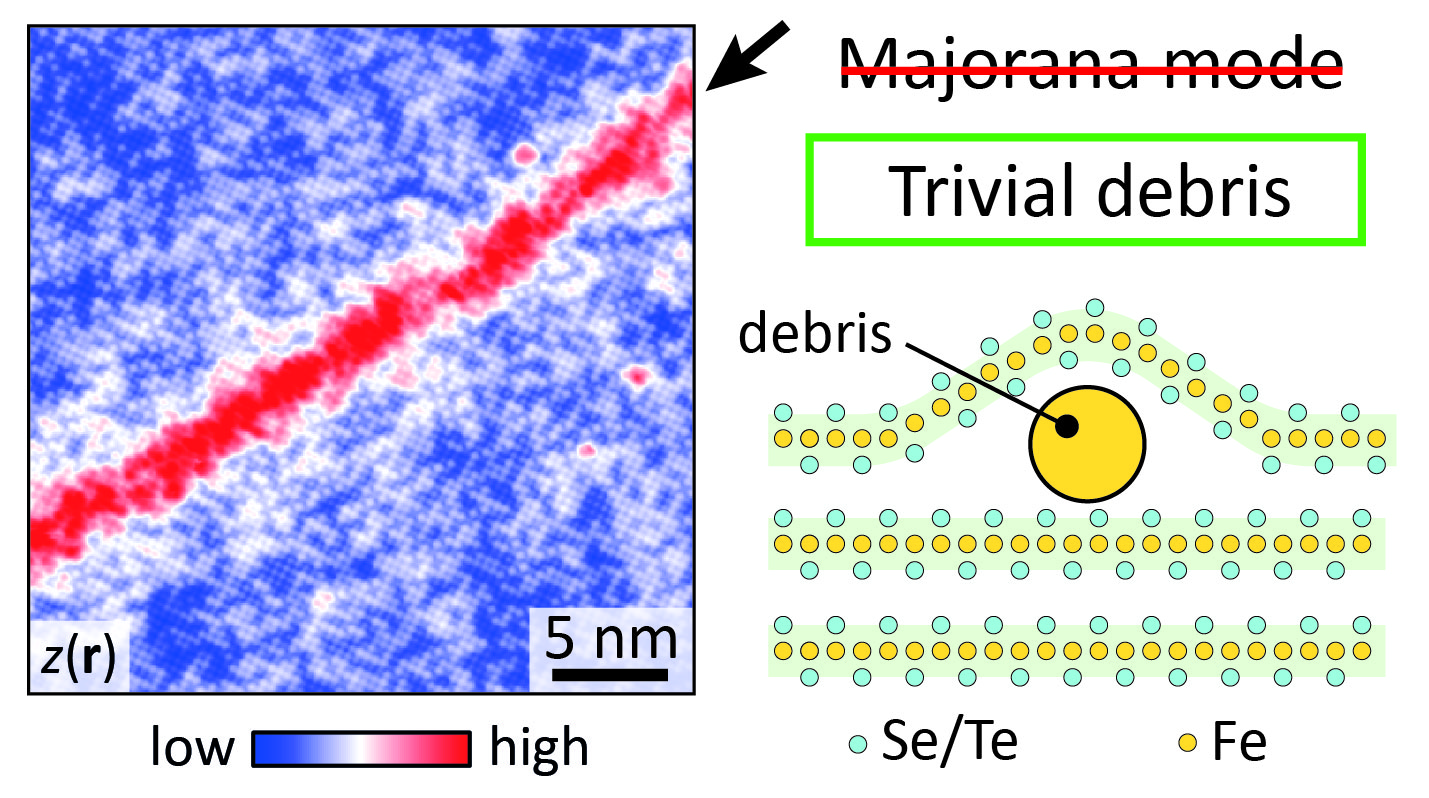
| Physicists at the Laboratoire physique des solides (CNRS/Université Paris-Saclay) have uncovered that the sub-gap states observed in one-dimensional defects in superconducting Fe(Se,Te) are caused by sub-surface debris, contrary to previous claims suggesting they are structural domain walls that host dispersing Majorana modes. Their findings reveal a topologically trivial origin for these states. |
The quest for topological superconductivity and the possibility to use it for quantum information applications has lead to numerous claims of Majorana modes. These modes are states inside the gap of a superconductor that are topologically protected, meaning they are robust to common perturbations such as most types of random disorder. As such, qubits derived from Majorana modes are anticipated to exhibit very long coherence times thereby reliably carrying information. One claim of Majorana modes focussed on sub-gap states along a one dimensional defect in superconducting Fe(Se,Te). It was found that the lattice left and right of the defect has a phase shift of pi, as would be the case for a structural domain wall. Assuming that the superconducting state then also has a phase shift of pi, the in-gap states were claimed to be dispersing Majorana modes.
Researchers at the Laboratoire de Physique des Solides, now reveal the true origin of the defect and its in-gap states. They first improved the reliability of the technique to determine the phase shift of the lattice. Then, based on nearly one hundred different measurements of 1D defect, they find that the phase shift is in fact on average pi/2. Additionally, they observe similar sub-gap states on surface defects without any phase shift, and no sub-gap states on defects with a phase shift. They also demonstrate the ability to manipulate the 1D defects, directly visualizing the presence of all surface atoms on the defect. Altogether, these results show that the defects are not a structural domain wall, but originate from sub-surface debris, and that the states are topologically trivial. This work highlights that despite appearances, not everything in Fe(Se,Te) is topological. Whether or not Majorana modes can be hosted at true domain walls in this material remains an open question.
Contributors
Nanosecond at the Nanoscale Team (NS2)
Theory Team (THEO)
Brookhaven National Laboratory, USA
Fundings
ANR (ANR-21-CE30-0017-01), US Department of Energy, office of Basic Energy Sciences, contract no. DOE-sc0012704
References
Andrej Mesaros, Genda Gu, Freek Massee
Nature Communications 15, 3774 (2024)
doi : 10.1038/s41467-024-48047-0
Contact
Freek Massee freek.massee@universite-paris-saclay.fr
